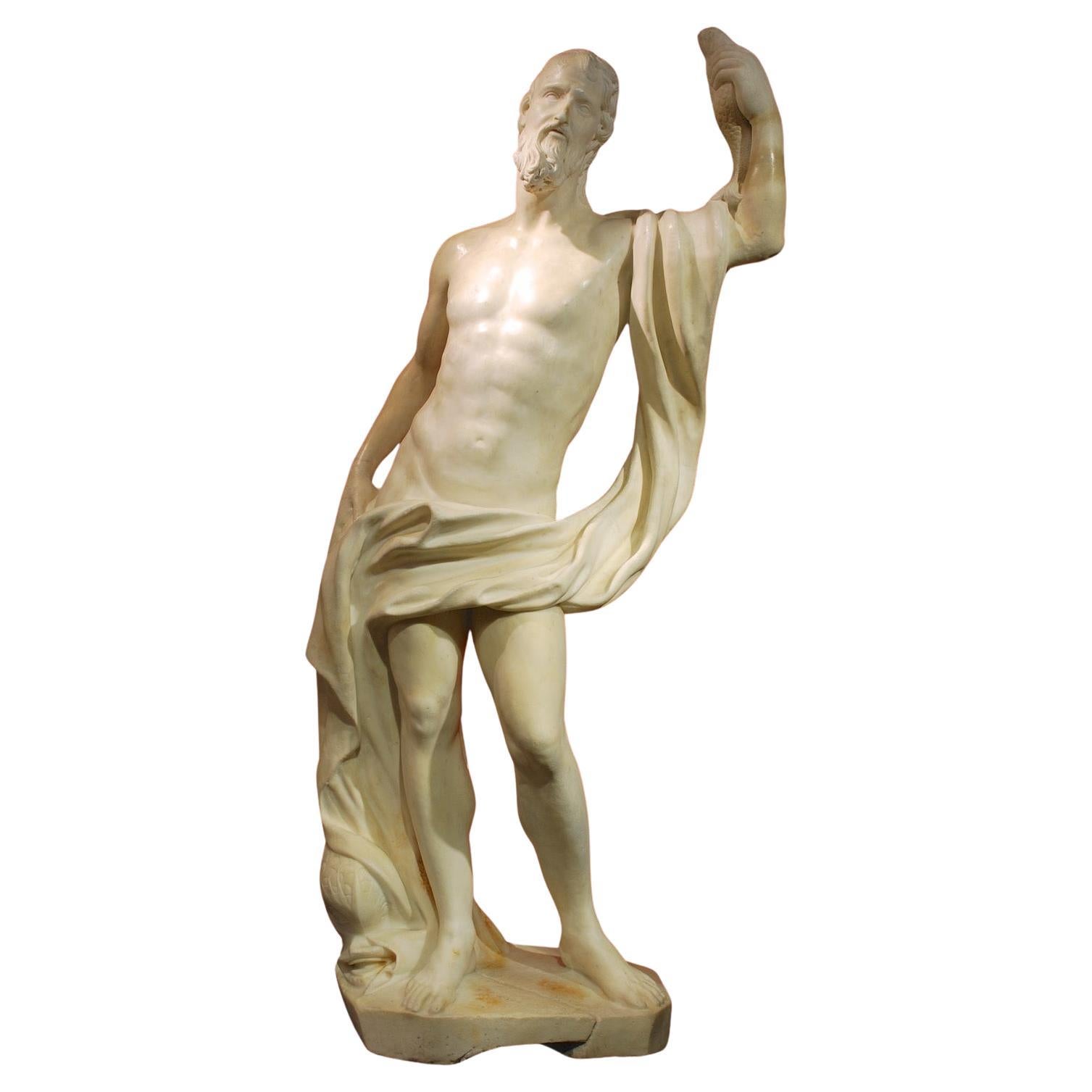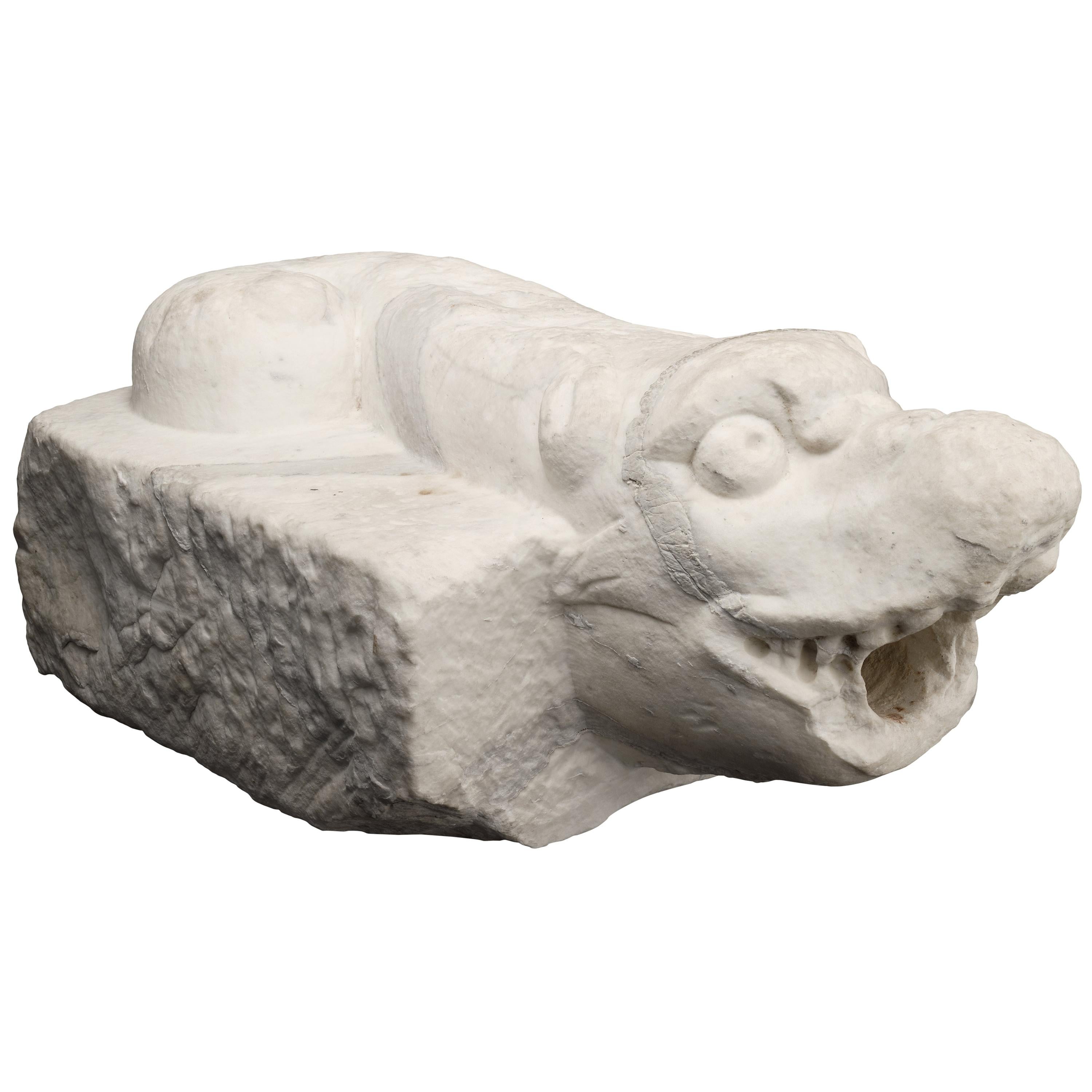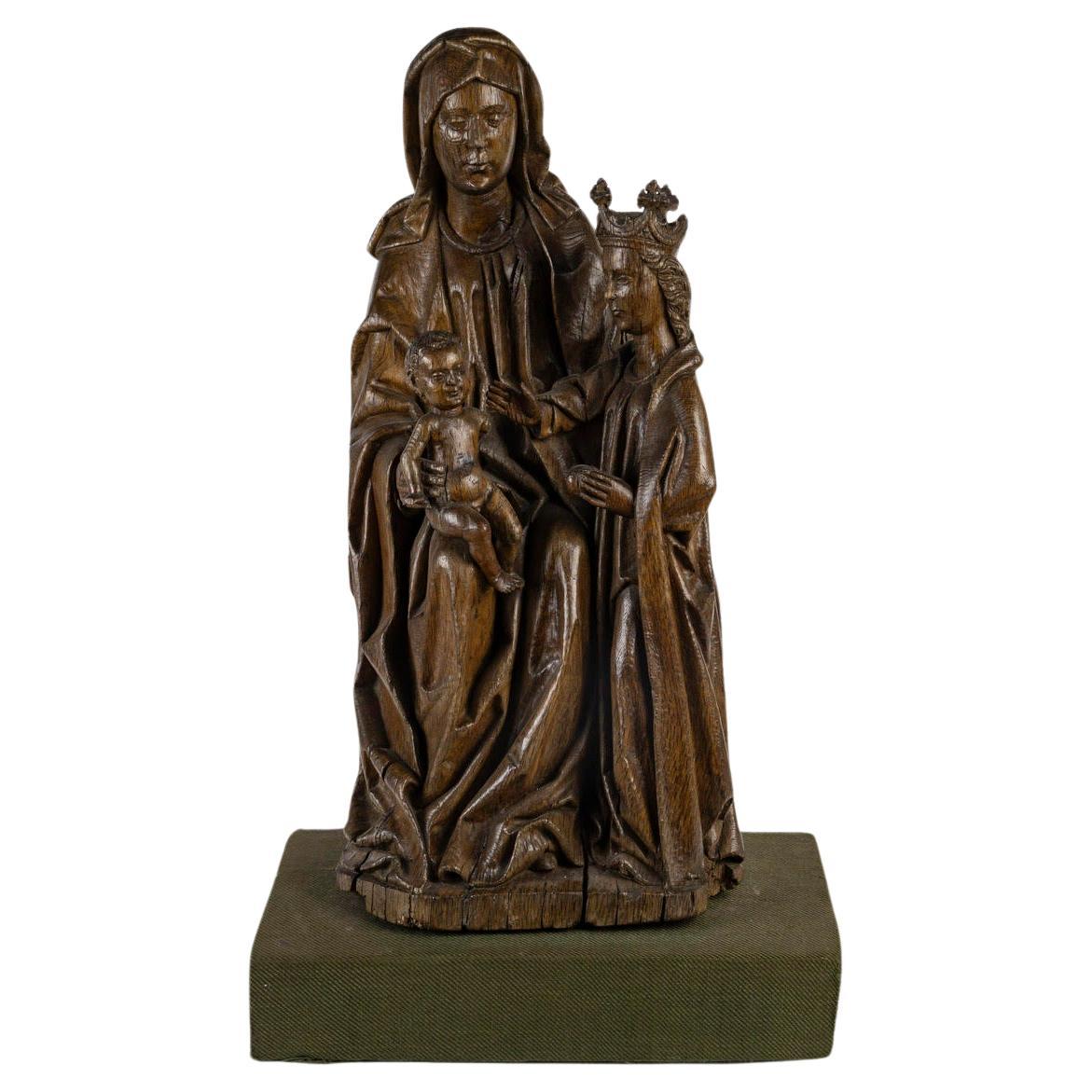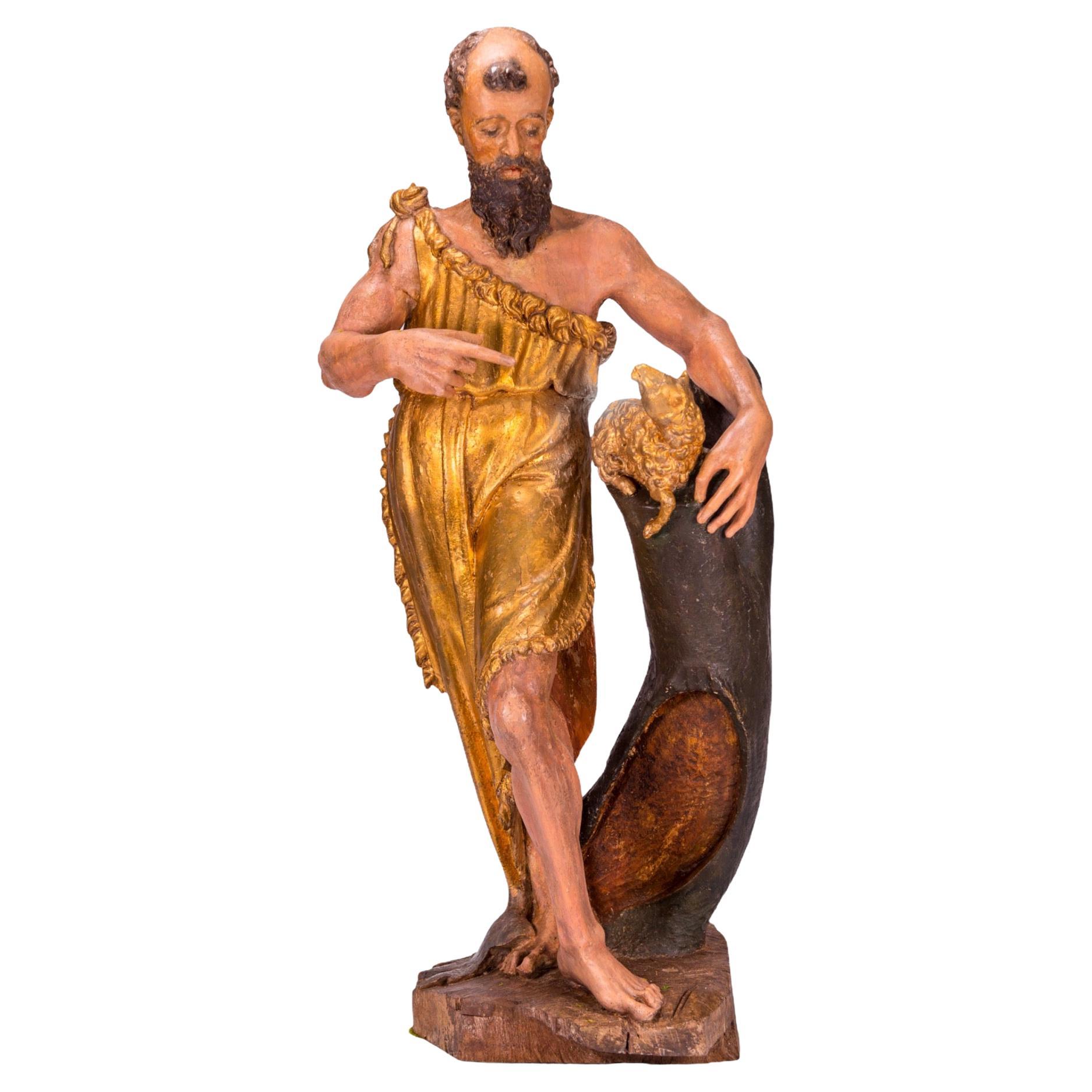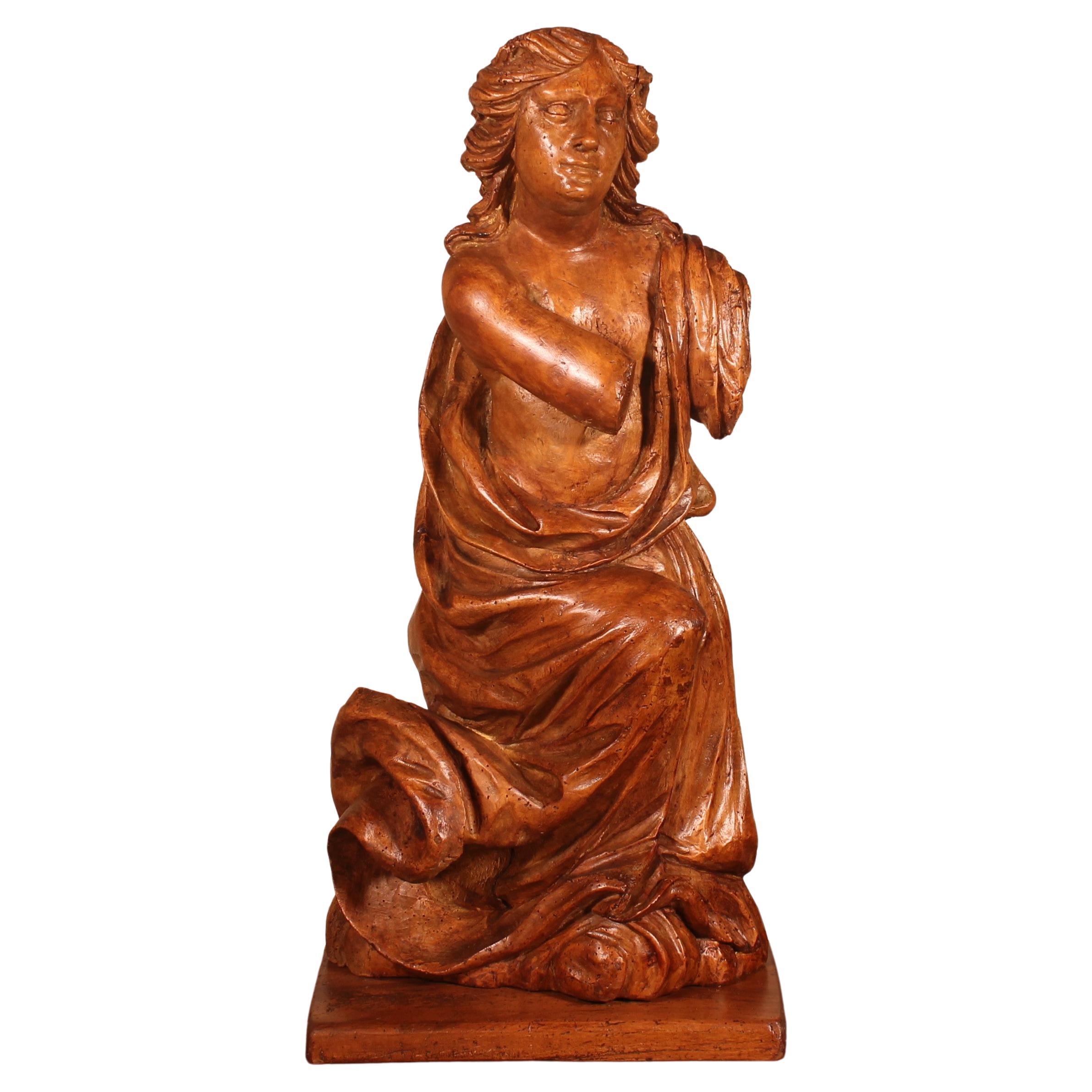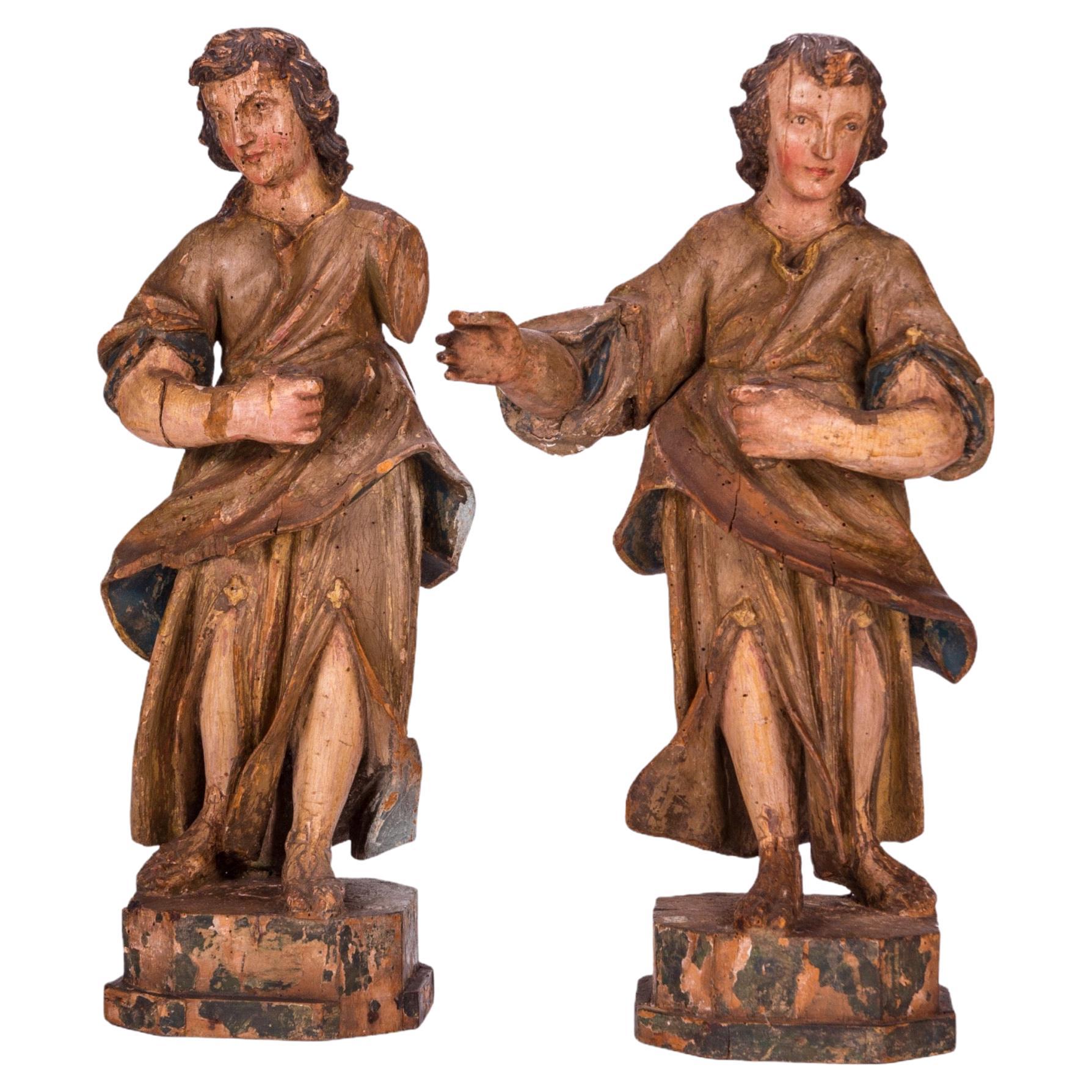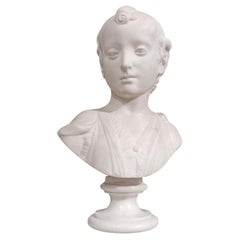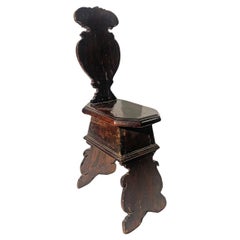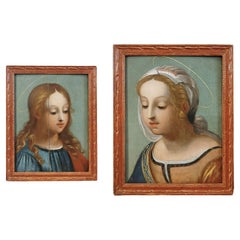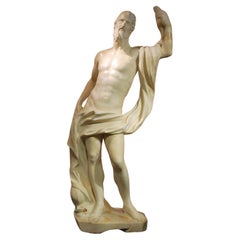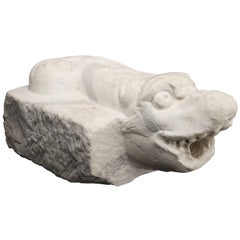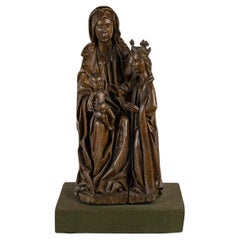Items Similar to 16th CENTURY MARBLE SCULPTURE OF A YOUNG HERCULES
Want more images or videos?
Request additional images or videos from the seller
1 of 12
16th CENTURY MARBLE SCULPTURE OF A YOUNG HERCULES
About the Item
Splendid sculpture in white Carrara marble depicting a young Hercules holding the world. Originally, the work was conceived to be used as a caryatid at the beginning of a sumptuous marble staircase in a palace. Subsequently, the work was sold and, in 1900, it became part of the collection of the garden of a villa located in the Roman hills, later destroyed by the bombings of the Second World War. The work shows signs of erosion due to prolonged exposure to atmospheric agents. Despite this, the beauty and majesty of the work are still evident. The statue is full of antiquity and history, and the mastery in modeling the marble and the precision in the details give the work an aura of grandeur and power. The work is attributed to the School of Valerio Cioli, a renowned Florentine sculptor who lived between 1529 and 1599.
Measurements: H x W x D 85 x 35 x 33cm
- Dimensions:Height: 33.47 in (85 cm)Width: 13.78 in (35 cm)Depth: 13 in (33 cm)
- Style:Renaissance (Of the Period)
- Materials and Techniques:
- Place of Origin:
- Period:
- Date of Manufacture:1500
- Condition:Wear consistent with age and use. We remind you that the authorization of the Fine Arts is required for export. Please remember that whoever takes care of the shipment will also have to take care of the request to the Fine Arts.
- Seller Location:Firenze, IT
- Reference Number:1stDibs: LU7189240672542
About the Seller
3.7
Vetted Professional Seller
Every seller passes strict standards for authenticity and reliability
1stDibs seller since 2022
31 sales on 1stDibs
Typical response time: 1 hour
- ShippingRetrieving quote...Shipping from: Firenze, Italy
- Return Policy
Authenticity Guarantee
In the unlikely event there’s an issue with an item’s authenticity, contact us within 1 year for a full refund. DetailsMoney-Back Guarantee
If your item is not as described, is damaged in transit, or does not arrive, contact us within 7 days for a full refund. Details24-Hour Cancellation
You have a 24-hour grace period in which to reconsider your purchase, with no questions asked.Vetted Professional Sellers
Our world-class sellers must adhere to strict standards for service and quality, maintaining the integrity of our listings.Price-Match Guarantee
If you find that a seller listed the same item for a lower price elsewhere, we’ll match it.Trusted Global Delivery
Our best-in-class carrier network provides specialized shipping options worldwide, including custom delivery.More From This Seller
View AllLATE 18th-EARLY 19th CENTURY MARBLE BUST OF A YOUNG CHARIOTEER
Located in Firenze, FI
Elegant white marble bust, supported by a circular base in turned marble. The bust depicts a young charioteer, portrayed with a serene expression, and his face framed by curly, volum...
Category
Antique Late 18th Century Italian Directoire Busts
Materials
Marble
16th CENTURY GUARD'S STOOL
Located in Firenze, FI
Typical stool with backrest and curved legs in solid walnut wood with dark patina. This type of bench is used in guard posts, for this reason the seat is small and uncomfortable, to ...
Category
Antique 16th Century Italian Renaissance Stools
Materials
Wood, Walnut
END OF THE 16th CENTURY WALNUT CHEST WITH GOLDEN CARVINGS
Located in Firenze, FI
Beautiful Renaissance walnut chest of drawers with small dimensions, characterized by carvings and panel decorations both on the drawers and on the sides. This piece of furniture is ...
Category
Antique 16th Century Italian Renaissance Dressers
Materials
Walnut
LATE 16th CENTURY PAIR OF OIL PAINTINGS ON WOODEN PANELS
Located in Firenze, FI
Elegant pair of oil paintings on wooden panels, depicting Jesus and the Madonna in their youthful physiognomy. Originally part of a larger wooden altarpiece, these two works are now ...
Category
Antique 16th Century Italian Renaissance Paintings
Materials
Wood, Paint
16th CENTURY RENAISSANCE SMALL SIDEBOARD IN SOLID WALNUT
Located in Firenze, FI
Elegant sideboard in solid walnut wood with dark patina, small but refined in size. The cabinet is equipped with two doors and two drawers, with turned and lost wax cast bronze handl...
Category
Antique 16th Century Italian Renaissance Credenzas
Materials
Nutwood
END OF THE 19th CENTURY BRONZE SCULPTURE DAVID AND GOLIATH WITH MARBLE BASE
Located in Firenze, FI
Beautiful bronze sculpture cast with the lost wax technique, depicting the young David standing with his sword raised, symbol of his victory over the giant Goliath, whose suffering head is represented on the green marble base. With a victorious expression and a proud and elegant bearing, David stands triumphant over the defeated enemy, with a decisive gesture of his right arm and a gaze turned toward the left. His body, inclined slightly to the right, creates a dynamism that involves the viewer from every angle. This small-scale replica...
Category
Antique Late 19th Century Italian Figurative Sculptures
Materials
Marble, Bronze
You May Also Like
A 16th century carved marble sculpture of poseidon
Located in London, GB
This fine and imposing sculpture is an excellent example of 16th century Italian craftsmanship. The figure is stood on a raised, shaped rectangular base with a carved "dolphin" at th...
Category
Antique 16th Century Italian Renaissance Figurative Sculptures
Materials
Marble
Italian Ancient Marble Sculpture Fountain, Late 16th Century
Located in Milano, IT
Sea monster
Carrara marble mouth fountain
Italy, late 16th century
It measures 13.8 x 31.5 x 18.9 in (35 x 80 x 48 cm)
State of conservation: some small evident gaps and widespread signs of wear due to outdoor exposure. The gray marks crossing it do not come from restoration, but are rather the natural veins of the marble.
This work has some morphological characteristics typically associated with the iconography of the sea monster: an elongated muzzle, sharp teeth, protruding eyes, elongated ears, and a coiled serpent's tail.
An in-depth series of studies on artistic depictions of the sea monster attempted to verify how this symbol evolved in antiquity in the European and Mediterranean contexts and how it gradually changed its image and function over time. The iconography itself is mutable and imaginative and its history is rich with cultural and artistic exchange, as well as the overlapping of ideas. This occurred so much that it is difficult to accurately pinpoint the "types" that satisfactorily represent its various developments.
However, we can try to summarize the main figures, starting from the biblical Leviathan and the marine creature that swallowed Jonah (in the Christian version, this figure was to become a whale or a "big fish", the “ketos mega”, translation of the Hebrew “dag gadol”). Other specimens ranged from the dragons mentioned in the Iliad (which were winged and had legs) to "ketos” (also from Greek mythology), the terrifying being from whose Latinized name (“cetus”) derives the word "cetacean". See J. Boardman, “Very Like a Whale” - Classical Sea Monsters, in Monsters and Demons in the Ancient and Medieval Worlds, in Papers presented in Honor of Edith Porada, Mainz am Rhein 1987, pp. 73-84).
In Italy the monster underwent yet further variations: it can be found in Etruscan art on the front of some sarcophagi representing the companion of souls, while among the Romans we find the “Pistrice” (cited by Plinio in Naturalis Historia PLIN., Nat., II 9, 8 and by Virgilio in Eneide: VERG., Aen., III, 427), which appeared in the shape of a stylized hippocampus or a very large monstrous cetacean and evolved into a hideous being with a dragon's head and long webbed fins.
During the Middle Ages, the sea monster was the object of new transformations: at this time, it is often winged, the head is stretched like a crocodile, the front legs are often very sharp fins - sometimes real paws - until the image merges with dragons, the typical figures of medieval visionary spirituality widely found throughout Europe (on this topic and much more, see: Baltrušaitis, J., Il Medioevo fantastico. Antichità ed esotismi nell’arte gotica, Gli Adelphi 1997).
In Italy during the 15th and 16th centuries, the revival of classicism - representative of the humanistic and Renaissance periods - led to a different reading of these "creatures". Indeed, the sea monster was also to find widespread use as an isolated decorative motif, especially in numerous fountains and sculptures where dolphins or sea monsters were used as a characterizing element linked to water (on this theme see: Chet Van Duzer, Sea Monsters on Medieval and Renaissance Maps, London, The British library, 2013).
From the morphological point of view, the "sea monsters" of this period are mostly depicted as hybrid figures, in which the body of a mythological or real being (a hippocampus, a sea snake, a dolphin), is joined to a head with a rather indistinct appearance. It was usually characterized by large upright ears, an elongated snout, sharp teeth and globular, protruding eyes; a complex and indefinite figure, both from the symbolic point of view and from that of its genesis.
The work we are examining is placed as a cross between the medieval sea serpent and the Renaissance dolphin, with stylistic features which recall the snake as often used in heraldry (such as the "snake" depicted in the coat of arms of the Visconti - the lords and then dukes of Milan between 1277 and 1447 - and which, for some, may be derived from the representations of the “Pistrice” that swallowed Jonah).
In the search for sources, Renaissance cartography and in particular woodcuts should not be neglected. See for example the monsters of Olaus Magnus, from the editions of the “Historia de gentibus septentrionalibus” (“History of the peoples of the north”) and the natural histories of Conrad Gesner, Ulisse...
Category
Antique 16th Century Italian Renaissance Animal Sculptures
Materials
Carrara Marble
Oak Sculpture of Saint Anne, 16th Century.
Located in Saint-Ouen, FR
Oak sculpture of Saint Anne, 16th century.
Large oak sculpture of Saint Anne. Work from the Upper Rhine, Basel region. First third of the 16th century.
An arm is missing from the i...
Category
Antique 16th Century French Renaissance Figurative Sculptures
Materials
Oak
Sculpture of John The Baptist, 16th Century
Located in North Miami, FL
Early 16th Century Spanish gold gilded and polychromed carved wood sculpture of John The Baptist.
Category
Antique 16th Century Spanish Renaissance Figurative Sculptures
Materials
Gold Leaf
$10,000 Sale Price
20% Off
16th Century Walnut Sculptures from Germany
Located in Brussels, Brussels
Very elegant sculpture reprenting a Putti (angel) from the German renaissance period -16 century
Rare sculpture in walnut of great quality with a very beau...
Category
Antique 16th Century German Renaissance Figurative Sculptures
Materials
Walnut
$4,189 Sale Price
20% Off
Angelic Carved Wood Sculptures, 16th Century
Located in North Miami, FL
Pair of 16th Century Italian carved polychromed angelic sculptures.
Category
Antique 16th Century Italian Renaissance Figurative Sculptures
Materials
Gold Leaf
$9,375 Sale Price / set
25% Off
